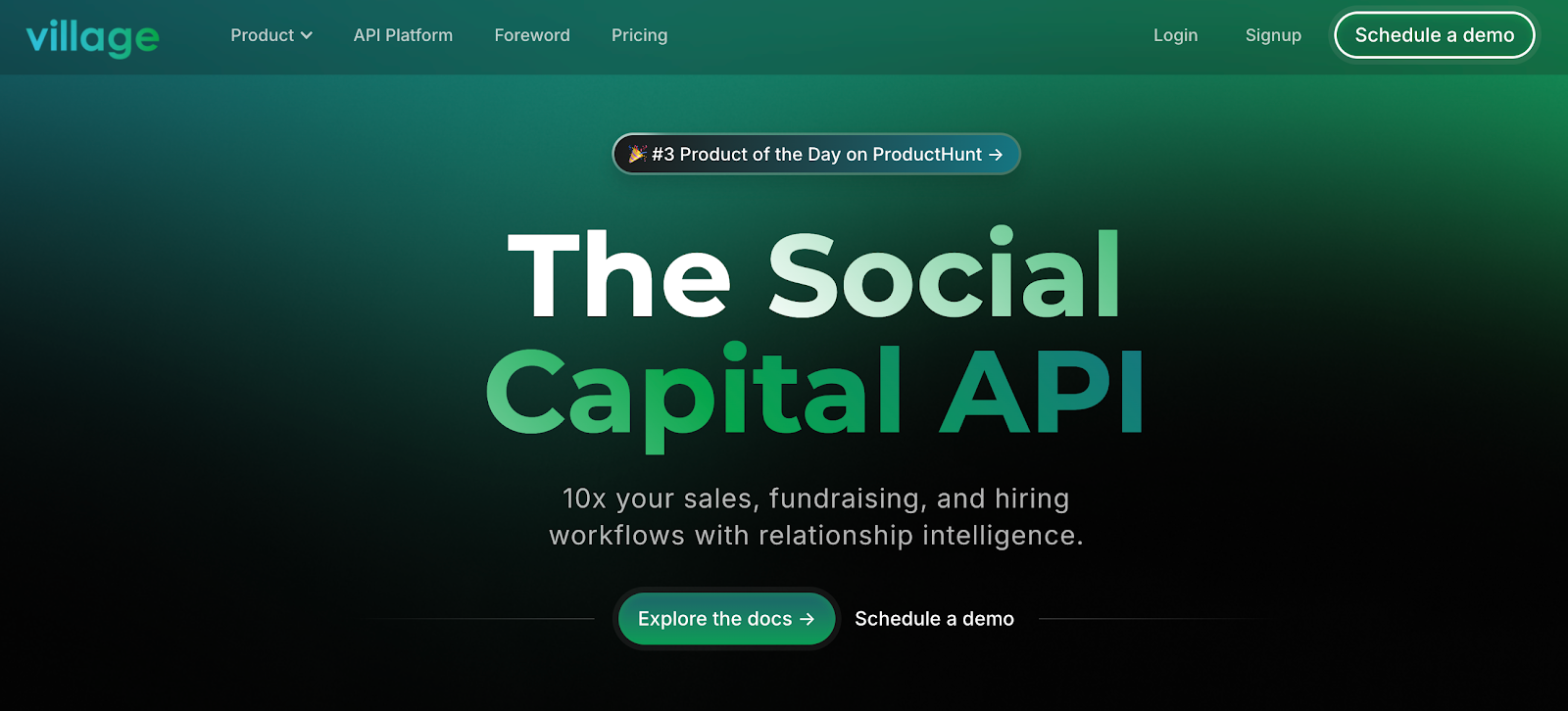When people feel connected, they show up. Whether it's a neighborhood group, professional network, or online community, engagement starts with one thing: real connection. But building that kind of connection doesn't happen by chance.
If you're trying to get people involved and keep them involved, you're not alone. Community engagement can feel like a moving target. What works for one group might fall flat for another.
This guide covers strategies that help people care, participate, and contribute. From real-world initiatives to digital tools, you'll find practical ways to build momentum and keep your community active.
What Is Community Engagement?
Community engagement is the process of involving people in conversations, decisions, and actions that shape their shared environment. It happens in neighborhoods, workplaces, schools, online groups, and any space where people come together around a common interest.
At its core, it’s about public participation. That could mean attending a meeting, sharing feedback, collaborating on a project, or helping influence a decision that affects the group.
Some communities form around geography, others around identity or shared goals. What matters most is creating opportunities for people to contribute rather than just observe.
No matter the setting, community engagement helps people feel connected, valued, and involved. It also leads to social and organizational outcomes that benefit everyone involved.
What Makes Community Engagement Important?
Communities work better when people are involved. Engagement builds trust between individuals, groups, and organizations. It creates room for honest conversations and shared problem-solving.
When people participate, decisions tend to reflect real priorities. That leads to better outcomes and stronger relationships over time.
Community involvement helps address issues affecting local residents, from safety and housing to education and infrastructure. It also contributes to resilient communities that adapt more to change.
Types of Community Engagement
Community engagement can take many forms. The format you choose depends on your goals, your audience, and how people prefer to connect. Check out different types of community engagement:
Informal Engagement
Informal engagement is often the starting point for building trust. These are the everyday interactions that happen through casual conversations, social media exchanges, or group chats.
People may share ideas, ask for support, or offer help without any formal structure. This kind of engagement works well when you’re building early interest or maintaining light, ongoing connections.
For example, a neighborhood Facebook group where people share local updates and resources is a form of informal engagement. It’s low-pressure but keeps people connected.
Formal Engagement
Formal engagement involves organized efforts with specific goals, timelines, and outcomes. Town hall meetings, community planning workshops, advisory councils, and forums for stakeholder engagement fall into this category. These settings are structured to gather input, present updates, or make decisions that affect the group.
This type of engagement is often used by local governments, nonprofits, or institutions that need to involve the public in decision-making or policy development.
Digital Engagement
Digital tools have expanded what engagement looks like. Online surveys, discussion boards, webinars, and email newsletters let people participate without needing to be in the same place. This type of engagement helps reach people who might not have time to attend in-person events or who prefer online communication.
For example, a nonprofit might use Instagram polls to get quick community input or host a Zoom Q&A to hear directly from supporters. Digital engagement also creates a record of conversations and feedback that can be revisited later.
In-Person Engagement
In-person engagement allows for richer, real-time interaction. It creates space for spontaneous conversation, non-verbal cues, and building relationships that can be harder to achieve online. Events like community dinners, volunteer days, or local cleanups often create a stronger sense of belonging and shared purpose.
These interactions deepen trust, bring new people into the community, or collaborate on complex ideas that benefit from real-time discussion.
Community Engagement Initiatives
Community engagement becomes real when ideas turn into action. Initiatives are the programs, events, and activities that bring people together around shared goals. They give structure to participation and help turn casual interest into ongoing involvement.
This might involve hosting training sessions, offering leadership development, or creating space for community-led projects. When people understand how to organize, collaborate, and speak up, they’re more likely to participate and keep participating.
Capacity building also helps distribute responsibility. Instead of relying on one organization or leader, the community becomes better equipped to support itself, solve problems, and stay connected over time.
Successful community engagement initiatives tend to have the following in common:
- Multiple entry points so people can engage in different ways (in person, online, or asynchronously).
- Openness to different perspectives by making room for diverse voices and lived experiences.
- Shared community ownership so people feel like they are helping shape the outcome rather than just observing it.
When initiatives are flexible and built with the community, people are more likely to stay involved. These efforts create momentum and trust that carry into future projects and support sustainable development.
How to Build Community Capacity
Strong communities grow when people have access to knowledge, tools, and opportunities to contribute. Building capacity helps individuals step into active roles and support efforts that matter to them.
This can involve training, mentorship, or creating space for community-led projects. When people understand how to organize, collaborate, and speak up, participation becomes easier and more consistent.
It also helps shift responsibility from a single group to a broader network. A community that builds its own capacity is better prepared to solve challenges, support one another, and stay connected.
These efforts don’t have to be large or formal. Here are a few examples of active community engagement:
- A nonprofit hosting a grant-writing workshop for residents with ideas they want to fund
- A youth group teaching public speaking so members can participate in public meetings
- A digital community offering peer-led onboarding to help new members get involved quickly
As more people gain confidence, they invite others to take part in the community engagement process. This creates a ripple effect that strengthens local communities.
What Active Participation Looks Like in Community Engagement
It’s one thing to show up for a single event. It’s another to keep showing up, ask questions, share ideas, and stay connected over time. Active engagement happens when people feel like their voice matters and their involvement leads somewhere.
This kind of participation often starts small. Someone joins a local cleanup, then volunteers to help plan the next event. A member of an online group answers a question, then starts leading discussions. These moments build trust and invite others to take part too.
To support active participation, communities need simple and welcoming entry points. A few ways to encourage this include:
- Offering clear opportunities to contribute, like open roles, event sign-ups, or community polls
- Keeping communication open and transparent so people know what’s happening and how decisions are made
- Acknowledging contributions in ways that feel genuine and personal
When people feel seen, included, and able to shape the outcome, they stay involved. And when that kind of participation becomes consistent, the community becomes stronger and more self-sustaining.
This active involvement often comes from citizen participation, and when supported well, it cultivates collaboration between groups of people with different experiences and interests.
Local Governments and Community Engagement
Local governments often shape how communities connect and participate. They manage the platforms, services, and policies that affect daily life, which gives them a unique opportunity to support meaningful engagement.
When people can contribute to local decisions, they feel more connected to the place where they live. Public meetings, advisory boards, and planning sessions provide a foundation, but engagement works better when it’s built on mutual dialogue.
This means offering meetings at convenient times, sharing materials in multiple languages, and creating different ways for people to share feedback. It also helps to collaborate with community partners who already have strong relationships and local trust.
When engagement feels consistent and accessible, trust tends to grow. And with that trust, more people are likely to get involved and keep participating in community events. It strengthens ties within local populations and supports better access to public services.
Effective engagement in this context often involves partnerships across departments and sectors, aligning efforts around shared goals such as service delivery, economic development, and improved educational outcomes.
Principles of Effective Community Engagement
Good community engagement isn’t built on one method or tool. It depends on how people are invited in, how they’re treated once they join, and how their input shapes what happens next.
Inclusion
Reaching a broad mix of voices is one of the most important principles. That means actively engaging people who may not usually be part of the conversation. When individuals see that their background, needs, or experience is reflected in the process, they’re more likely to take part.
Clear Communication
People need to understand why engagement is happening and what their role looks like. Clear goals, consistent updates, and honest messaging help build trust. Without that clarity, participation tends to drop or lose momentum.
Shared Ownership
Community members are more likely to stay involved when they feel like they’re shaping the outcome. Engagement should create opportunities for influence, not just feedback. When people help guide decisions, the sense of connection deepens.
Consistency and Trust
Strong engagement relies on more than one-time efforts. It comes from showing up regularly, following through on commitments, and being transparent about the next steps. Over time, this builds trust that keeps people coming back.
These principles apply whether you’re working with people connected by geographic proximity, focused on a special interest, or building a network that requires long-term commitment.
Once those principles are in place, the next step is turning them into action. That’s where strategy comes in.
Community Engagement Strategies You Should Try
Principles encourage community participation, and strategies bring ideas to life. The right community engagement efforts help people feel welcome, motivated, and ready to contribute.
1. Start With Clear Goals
Without a clear goal, engagement can feel directionless. Are you trying to gather feedback, build awareness, increase participation, or co-create a new solution?
Defining your purpose early on helps guide your messaging, choose the right formats, and set expectations. It also helps your community understand why their input matters and what they’re contributing to.
For example, if your goal is to improve local park safety, your strategy might include:
- Gathering input from residents
- Partnering with local organizations
- Sharing proposed changes through open forums and digital updates
2. Understand Who You’re Trying to Reach
You can't engage people if you don’t understand their routines, preferences, and concerns. That includes knowing where they spend time, what communication methods they trust, and what might prevent them from participating.
A working parent, for instance, may prefer online surveys over evening meetings, while a senior resident might appreciate phone calls or printed updates.
Do some research. Ask questions. And make adjustments based on what people tell you. When engagement meets people where they are, participation grows naturally.
3. Work With Trusted Connectors
People often listen to people they already know. That’s why partnering with local leaders, organizers, or active community members can make your outreach more effective. These connectors already have relationships and know how to navigate local dynamics.
They can help introduce your efforts, vouch for your intentions, and invite participation in a way that feels personal and genuine. This is especially important when working with communities that have experienced broken trust or disengagement in the past.
4. Offer Multiple Ways to Participate
A single format doesn't work for everyone. Flexibility encourages more people to take part in community meetings.
You might offer a mix of in-person events, online discussions, one-on-one conversations, or written feedback options. Even a quick text survey or suggestion box can give people a chance to weigh in.
The goal is to remove as many barriers as possible. People are more likely to get involved when it feels convenient and comfortable.
5. Follow Up and Show Progress
One of the biggest mistakes in engagement is collecting input and never closing the loop. If people take the time to share their ideas, they want to know that someone listened. Share updates, show how feedback was used, and explain what comes next.
How to Maintain Community Engagement
Initial interest is only the beginning. Keeping people engaged over weeks, months, or even years takes consistency, care, and a clear sense of purpose.
One of the most reliable ways to maintain engagement is through regular communication. Share updates, celebrate small wins, and let people know how their involvement continues to shape outcomes. Even a short message or quick check-in helps to remind people that their voice still matters.
It's also helpful to keep offering new ways to get involved. As the group grows or priorities shift, people may want different roles or opportunities.
Some might step into leadership, while others prefer to support in the background. Making space for both keeps the community accessible and welcoming.
You don’t need to reinvent the wheel to keep people interested. Familiar rhythms, like monthly newsletters, recurring events, or rotating volunteer roles, help set expectations and give people something to look forward to.
How to Measure and Evaluate Community Development Efforts
If you’re not tracking community development efforts, it’s hard to know where to improve. Measurement gives you a clearer view of how people are participating, what efforts are gaining momentum, and where engagement may be falling off.
Start with basic metrics. Look at attendance, volunteer sign-ups, survey responses, or how often people return to participate. These numbers help you understand the reach and consistency of your community development work.
Qualitative feedback matters just as much. What are people saying in meetings, forums, or follow-up conversations? Are they excited, frustrated, or unsure of what comes next? Their responses offer insight into how supported and included they feel.
Evaluation isn’t about proving success. It’s about learning how your approach is landing and how to adjust as the community evolves. These small changes help keep your work grounded in what people need and value.
Community Engagement in Different Sectors

Community engagement takes different forms depending on the setting. Each sector has its own priorities, but the goal remains consistent: invite people to participate, share input, and shape outcomes together. Here are the most common sectors in community engagement:
Education
In education, engagement often includes parent-teacher groups, student feedback sessions, and school board meetings. These efforts help schools better respond to the needs of students, families, and the broader community. When people feel involved in the learning environment, they’re more likely to support it.
Healthcare
Healthcare organizations engage communities to build trust and improve services. This could involve working with local leaders, hosting wellness events, or forming patient advisory groups. Community voices help shape how care is delivered and make services more approachable and relevant.
Business
Businesses engage their communities to build stronger relationships with customers, employees, or partners. This might involve hosting events, gathering product feedback, or supporting causes that matter to their audience. When people feel heard, they tend to stick around and share that experience with others.
Community Engagement Tools and Platforms
Popular platforms like Slack, Discord, and Facebook Groups create space for ongoing conversations. Survey tools like Google Forms make it easy to collect feedback and check in with your community.
While many tools help facilitate communication, not all help communities connect in deeper, more intentional ways. That’s where platforms like Village offer something different.
How Village Supports Community Engagement
Village is built to make relationships easier to discover, grow, and support. It doesn’t just help you manage a group. It helps your community become a network that works together.
Here’s how Village makes a difference:
- Introductions become effortless: Members can find warm intro paths to each other even if they don’t already know one another. This makes it easier to share help, insights, or opportunities in a way that feels natural.
- The network stays active and evolving: Instead of a static member list, Village shows how people are connected through shared history, co-investments, or team experience. It turns passive members into active collaborators.
- Engagement becomes smarter and more intentional: Village syncs with tools people already use, like LinkedIn, Google Contacts, and calendars.
- Growth feels meaningful, not chaotic: With the Paths Explorer® widget and API, Village integrates into existing community platforms, portals, or apps. New members quickly find value, while community managers can see who’s actively supporting others.
Unlike other platforms that require constant posting or reminders to stay engaged, Village builds on relationships that already exist. It helps communities grow through trust, shared context, and thoughtful connection.
Build Stronger Communities Through Village

Community engagement doesn’t come from a single event or campaign. It develops through consistent effort, thoughtful planning, and real connection. When people feel involved and able to contribute, they’re more likely to stay active and engaged in community groups.
Whether you’re organizing a local project, managing an online group, or supporting a professional network, the strategies in this guide can help you create lasting momentum. The tools you choose and how you use them shape how people connect and participate.
If you're looking for a better way to help your members build meaningful relationships, Village offers a different kind of solution. It helps people work together, support each other, and grow as a community.
Want to see how Village can support your engagement goals? Schedule a demo and find out what Village can do for you.
FAQs About Community Engagement
What is meant by community engagement?
Community engagement is the process of involving people in decisions, activities, or conversations that affect them. It’s about creating opportunities for people to contribute, connect, and shape what happens in their communities.
What are the 3 C's of community engagement?
The 3 C’s often refer to communication, collaboration, and commitment. These elements help build strong, responsive relationships between community members and organizations.
What are the 8 types of community engagement?
While definitions can vary, the eight common types of community engagement are information sharing, consultation, involvement, collaboration, empowerment, outreach, capacity building, and feedback. Each type reflects a different level of participation and decision-making.
What are examples of good community engagement?
Good examples include town hall meetings where feedback shapes outcomes, local cleanups organized by residents, or online groups that actively connect members around shared goals. What makes them work is openness, consistency, and a sense that everyone’s voice matters.










